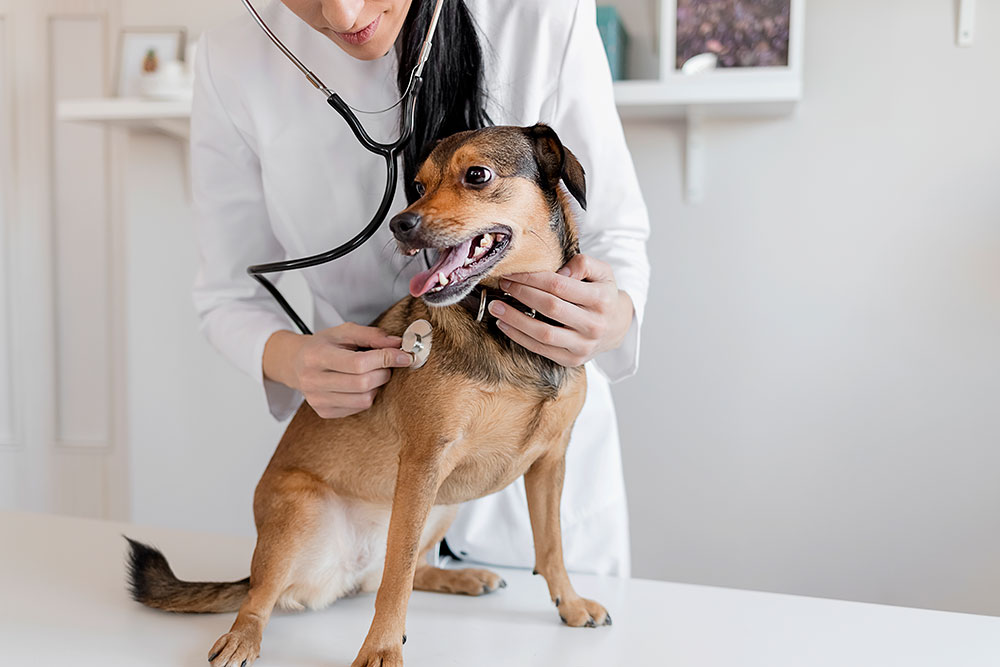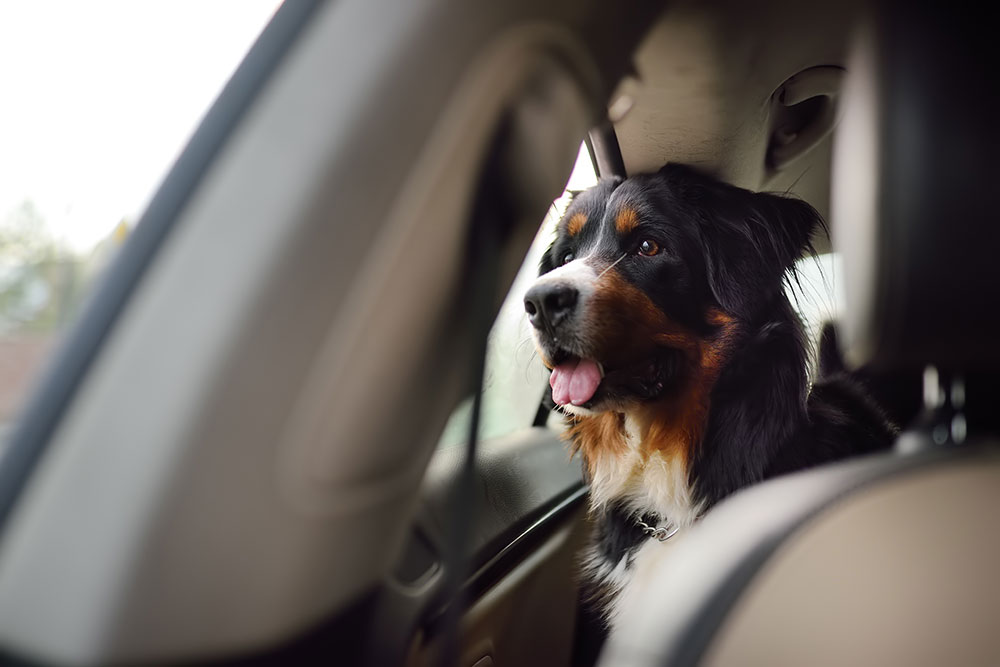7 Steps for a Stress-Free Veterinary Visit

Have you ever skipped your pet’s veterinary visit because they don’t like going to the veterinarian? A veterinary hospital’s unfamiliar sights, sounds, and smells can cause some pets to become anxious. Unfortunately, pets don’t understand that poking them with needles, checking their temperature, touching their toes, or sticking instruments in their ears is beneficial to their health, and they can become stressed. In response to a stressful scenario, your pet’s brain enters fight-or-flight mode, and remembering previous visits can trigger repeated and worsening anxiety during future veterinary visits.
Additionally, stress can alter vital readings and test results, potentially masking underlying problems and complicating the diagnostic and treatment process.
However, you can reverse this fear response and help your pet develop positive associations with veterinary care. Use these seven steps to help your stressed pet relax during veterinary visits and prevent puppies and kittens from developing a stress response before their anxiety becomes overwhelming.
#1: Desensitize your pet to handling and restraint
Desensitization and counterconditioning are training techniques used to help pets associate potentially unpleasant handling with tasty treats or other positive rewards, such as praise, petting, or a favorite toy. By practicing these strategies with your pet, you teach them to replace their negative reaction with a new, positive response.
Feet, nails, and ears are common spots that pets dislike having touched, but you can work on any sensitive body area by lightly touching it while offering your pet a reward. Gradually lengthen the time you hold a body part until your pet no longer resists having it handled.
#2: Avoid busy veterinary waiting rooms
If a loud, crowded waiting room ramps up your nervous pet’s anxiety, ask the front desk staff to place you and your pet in an exam room as soon as you arrive at the hospital. If a room isn’t available, consider waiting in your car or going for a short walk, so your pet can release some nervous energy. Some veterinary offices offer separate waiting areas for dogs and cats, which can help reduce your pet’s anxiety.
#3: Teach your pet to love the carrier and car
If your pet gets in the carrier or car only when they go to the veterinarian and have had previous stressful visits, they will soon learn that transport equals a frightening event. When your pet sees the carrier or you ask them to get into the car, their anxiety kicks in long before they arrive at the veterinary hospital.
Teach your cat to love their carrier by keeping it out. Create a cozy, warm space with blankets and toys, and frequently place treats inside. For dogs with car anxiety, take quick trips around the block or to nearby places they enjoy, offering treats during the ride, and then return home for more goodies. As your dog becomes more comfortable with car rides, gradually increase your trip length.

#4: Take happy visits to the veterinary clinic
Happy visits to your veterinarian’s office focus on helping your pet replace past negative memories with positive associations. During a happy visit, your pet will greet team members, receive lots of attention, and explore the hospital while receiving high-value treats—no poking, prodding, or needles. Your pet will eventually get excited to see their favorite people when you pull into the veterinary hospital parking lot.
#5: Stay calm and lead by example
Pets are incredibly tuned into their owners’ emotions and look to them when feeling uncertain about a particular situation. If you’re worried about your pet’s behavior at the veterinary hospital or concerned about how they’re feeling, you might put off an anxious, unsure vibe that your pet will notice. If you remain calm and behave normally, your pet will be more at ease.
#6: Skip your pet’s breakfast the day of their veterinary visit
By providing your furry pal with rewards and distractions during their veterinary visit, you help them build positive associations with your veterinary hospital, team members, and handling. If your pet is food motivated, skip breakfast and bring them to their visit hungry, along with their favorite treats. If your pet values other rewards, such as a favorite brush or toy, bring those along too.
#7: Ask your veterinarian about anti-anxiety products or medications
Sometimes a pet’s stress response is too extreme to reverse without assistance. Anti-anxiety medications can be given before veterinary visits to decrease their reactivity and help them learn to make new associations. Ask your veterinary team about medications and nondrug products, such as calming supplements, compression garments, eye shades, pheromones, or music, that may help your pet relax.
Choosing the right veterinarian is key to peaceful and cooperative veterinary visits. AAHA-accredited veterinary facilities use low-stress handling techniques. You can also search for Fear Free Certified® veterinary hospitals or professionals who undergo specific training to understand pet anxiety and use methods to help your pet have a positive experience.



